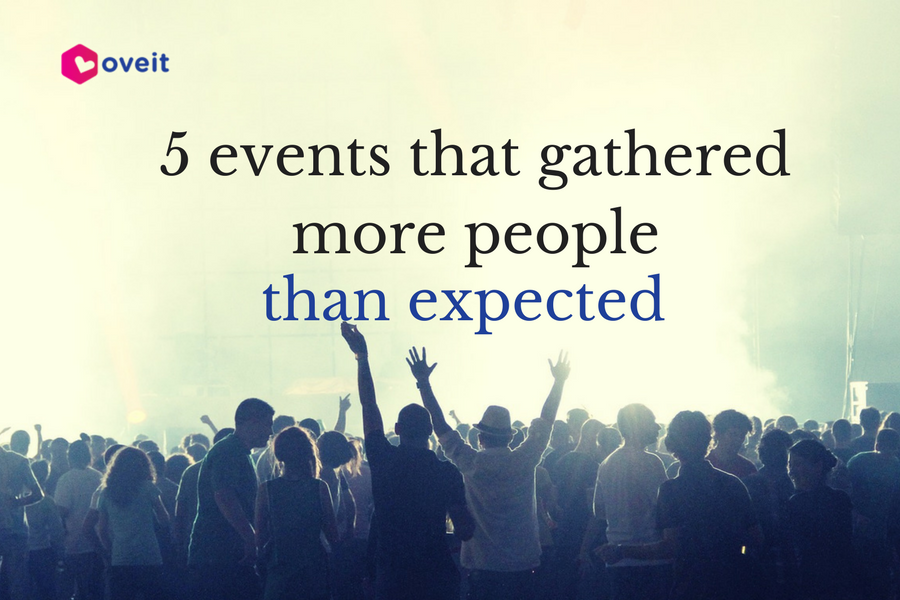Money is not the most important thing in life. The same goes for the event management scene: all the money in the world won’t guarantee that you’ll offer your guests the best experience. On the other hand, we must admit that money is an important asset when organizing events (conferences, festivals or concerts, it counts less). Those who have experience on their side know that there are two important aspects when looking at your cash-flow: smart tools (that give you instant access to ticket revenue) and event partners (sponsors). Obviously, there’s also the money that you are investing, but that’s a separate thing. And today I want to share with you some tips on how to do a better job when seeking (and negotiating) event partners for your next event.

There are different types of sponsorships, like cash sponsorship, media sponsorship, barter, and these ideas are useful for all; but initially, cash sponsorship stuck out.
*Disclaimer – I pinned down these ideas after a discussion with a friend of mine, a friend who’s job is to decide which events her company will partner with and why.
1. Start with market research
It’s not easy to get sponsors for your event (that’s if you don’t have them crowding at your doorsteps already). And I assume that you don’t want to waste precious time with companies that wouldn’t sponsorship your event (there are many reasons for which someone would partner with you, but there are also reasons for which it wouldn’t – and it’s not personal). It’s better to research which organizations sponsored which events and try to understand why. Look for:
-events similar to yours and the companies that offered sponsorship
-new companies that are trying to make themselves known (companies that offer small sponsorship to a large number of events)
-new companies that are trying to penetrate new (geographic or demographic) markets
-entities with the same set of values as yours (like Ted and Rolex for example, both treasuring time)
2. Your approach counts
Imagine these 2 different scenarios:
a. You receive an email from a stranger claiming that he organizes a conference that offers you the perfect chance to get brand recognition and leads. Although she/he has a nice proposal you find out this is the first edition of the event, meaning that the whole thing involves some level of risk.
b. Your friend calls you to invite you to a 3-way lunch: you two plus his/her former colleague that now owns an event planning business. And guess what: right now they are working on a conference that would offer you the perfect opportunity for fresh leads and brand recognition. Plus it’s their first edition so you can even negotiate a long-term partnership at a lower cost.
In which scenario do you think you would be more willing to sponsor the conference (assuming that there are no major differences between the two of them).
Fair or not, it’s also important how you get to present your offer. Before cold-calling, see if there are no common friends that can introduce you to that organization/person.
3. Get your numbers straight to attract event partners
If your event isn’t in its first edition you should be able to easily answer the popular questions about your attendees. Organizations willing to sponsor you are trying to get visible to certain categories of potential clients/stakeholders, so they will be interested to see some demographics. If you are using the right event registration software (that tracks check-in, cashless payments, interactions etc.) for your previous events you will have all data stored and ready to be used; If this is the first edition you should present your (very realistic) expectations, and also be ready to uphold them with solid arguments. Will you provide brand recognition and/or leads?
4.There are more layers of involvement
And I’m not referring to your gold, platinum, and adamantium sponsorship packages (which, to be honest, are kind of out-of-date). I’m talking about how a company may look at you: as a one-time deal (sponsor) or a long-time partnership. And this is why it’s crucial to do your homework before you go out and meet the ones that hold the financial resources. If you approach a company that has the same values as your event there are greater chances to get yourself with a new longtime partner.
P.S. the layer of involvement may depend on the department that you approach; people from PR & Communication are interested in a sponsorship that brings quick results, the CSR department is interested in a partnership that can consolidate the company’s position as an important social player (a long-term goal).
5. It’s not all about you
Dale Carnegie once said (and I quote): “You can make more friends in two months by becoming interested in other people than you can in two years by trying to get other people interested in you”. When someone accepts to meet and discuss a sponsorship it means that they see potential in a future collaboration. Listen, see what motivates them and which are your common points of interest, and your chances of getting a new sponsor/partner will increase dramatically.
5bis. Listen. Listen. Listen
This part is connected with the one above but I kept them separated because I wanted to highlight something: it’s more than possible that your future-to-be event partners know better than you which are the needs that can be filled with your help (but you must see how). This is why I think that your sponsorship standard packages are out of date and you should always be willing to listen to what your possible partners have to say; maybe you offer a 25.000 $ event partnership package (that includes signage and media coverage) to someone willing to sponsor you with 50.000 $ if you implement their workshop into your event. Be open-minded, otherwise you will lose many great event partners along the road.
Funding is crucial and we all know that great event partners are hard to find, so you should always show interest in your partner’s goals. After the whole thing is over meet with them and review the event: see if they have accomplished their goals, if there were any problems or new ideas. Your interest will show that you are willing to put in the work that’s necessary when building a long time relation.
